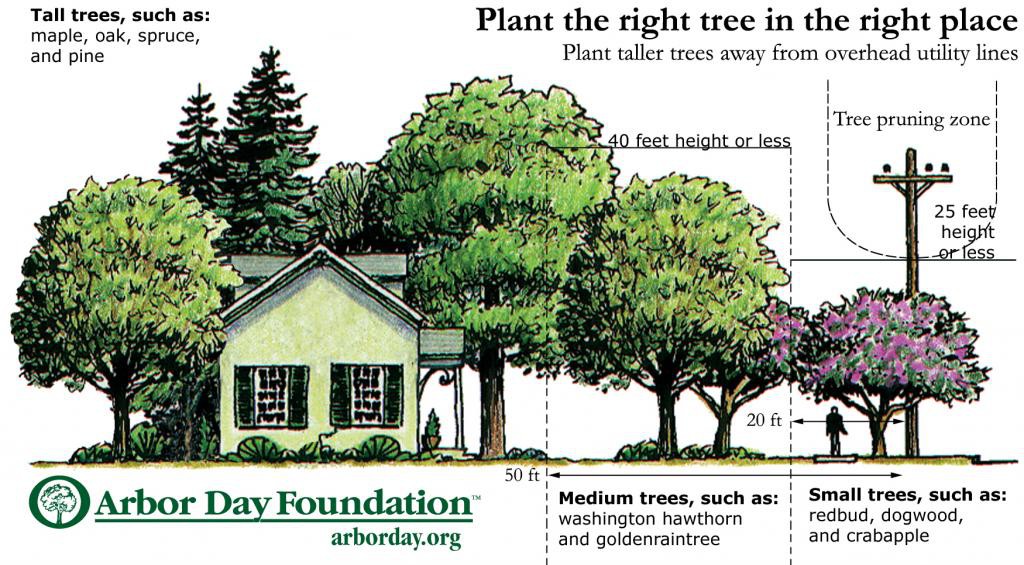Right Tree, Right Place

Monitor
Schedule time to spend a moment simply looking at your tree. You’ll be amazed how regular monitoring provides insight as to the health and growth of your tree.
Water
Regular watering is important. For a period of at least three years water your tree when rainfall is low. One inch per week is a good rule of thumb. A thorough deep soaking is best, but be careful not to flood the roots. They need both air and water to grow.
Fertilizer
Do not fertilize until spring of the second year following planting. We have found that applying ½ pound of slow release granular fertilizer scattered within 3-4 feet of the trunk works well. Apply this fertilizer in the spring and it will be plenty for the tree throughout the entire season.
Utility Friendly Trees
Conflicts Between Utilities and Trees
Plan ahead before planting a tree, because tall trees planted under utility lines are expensive to maintain and potentially hazardous. Power failures may result from tree limbs that break off and hit the power lines. Tall trees that have grown into the utility lines may conduct electricity making the tree dangerous, even potentially fatal. Tall trees planted under utility lines require regular pruning by the utility company that is costly and results in an unnatural and unhealthy tree form.
What is a utility-friendly tree?
Utility-friendly trees are small, reaching 25 feet or less at maturity. Such trees do not grow into, and thus interfere with, power lines. Utility-friendly trees are a safe solution to potential conflicts between power lines and urban trees. Utility-friendly trees contribute to the urban forest in many of the same ways that larger trees do by providing shade, spring flowers, fall color and habitat for wildlife.
We are working with local nurseries and garden centers to have these tags placed on Utility Friendly Trees. These trees will not interfere with utility lines or need major pruning to prevent outages. Please look for these tags or read the information included with any tree that you want to plant near utility lines.
What Trees Are Utility-Friendly?
- Amur Maple
- Yoshino Cherry
- Plum
- Flowering Cherry
- Japanese Lilac
- Cornelian Cherry Dogwood
- Eastern Redbud
- Flowering Dogwood
- Japanese Maple
- Crepe Myrtle
- Crabapple